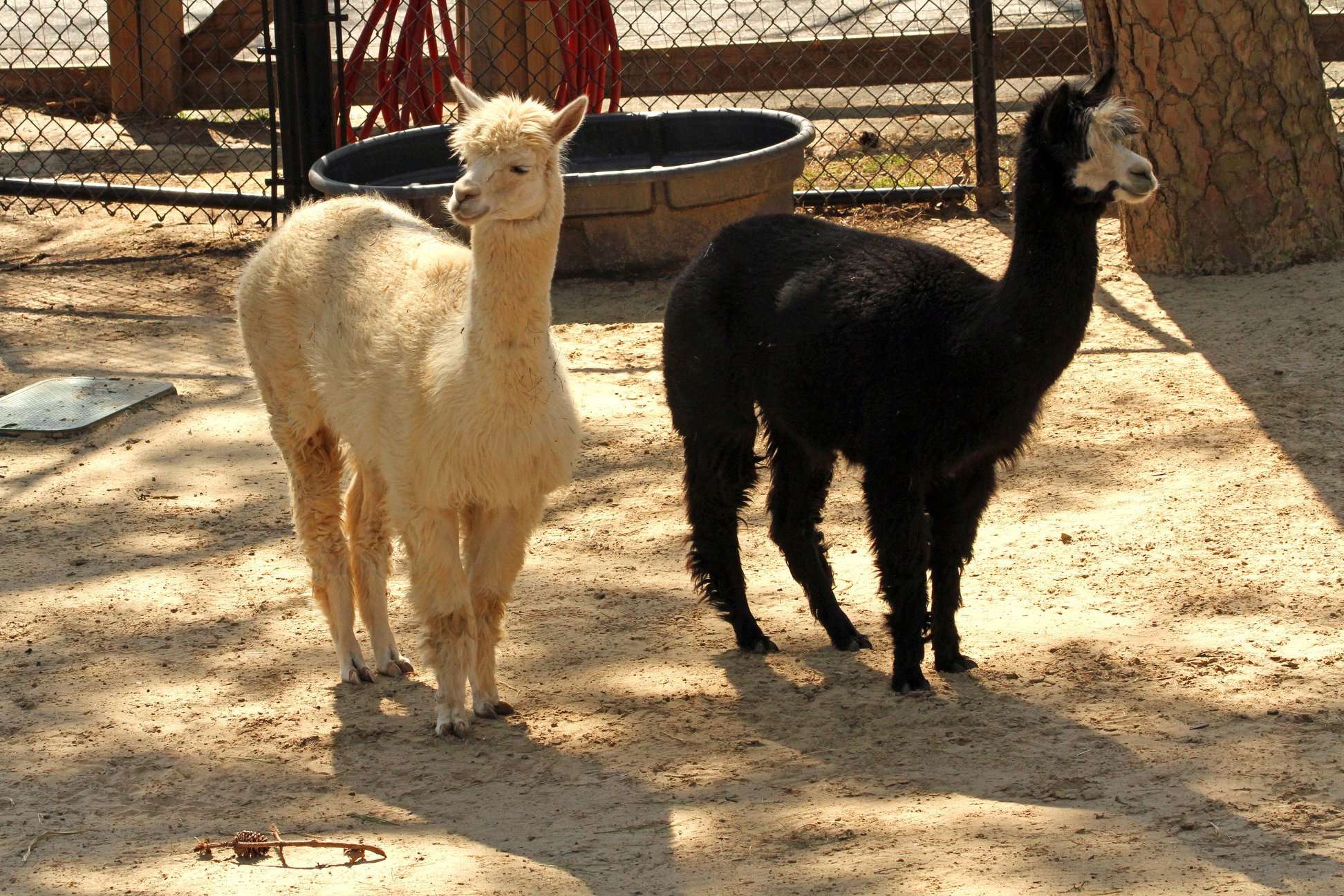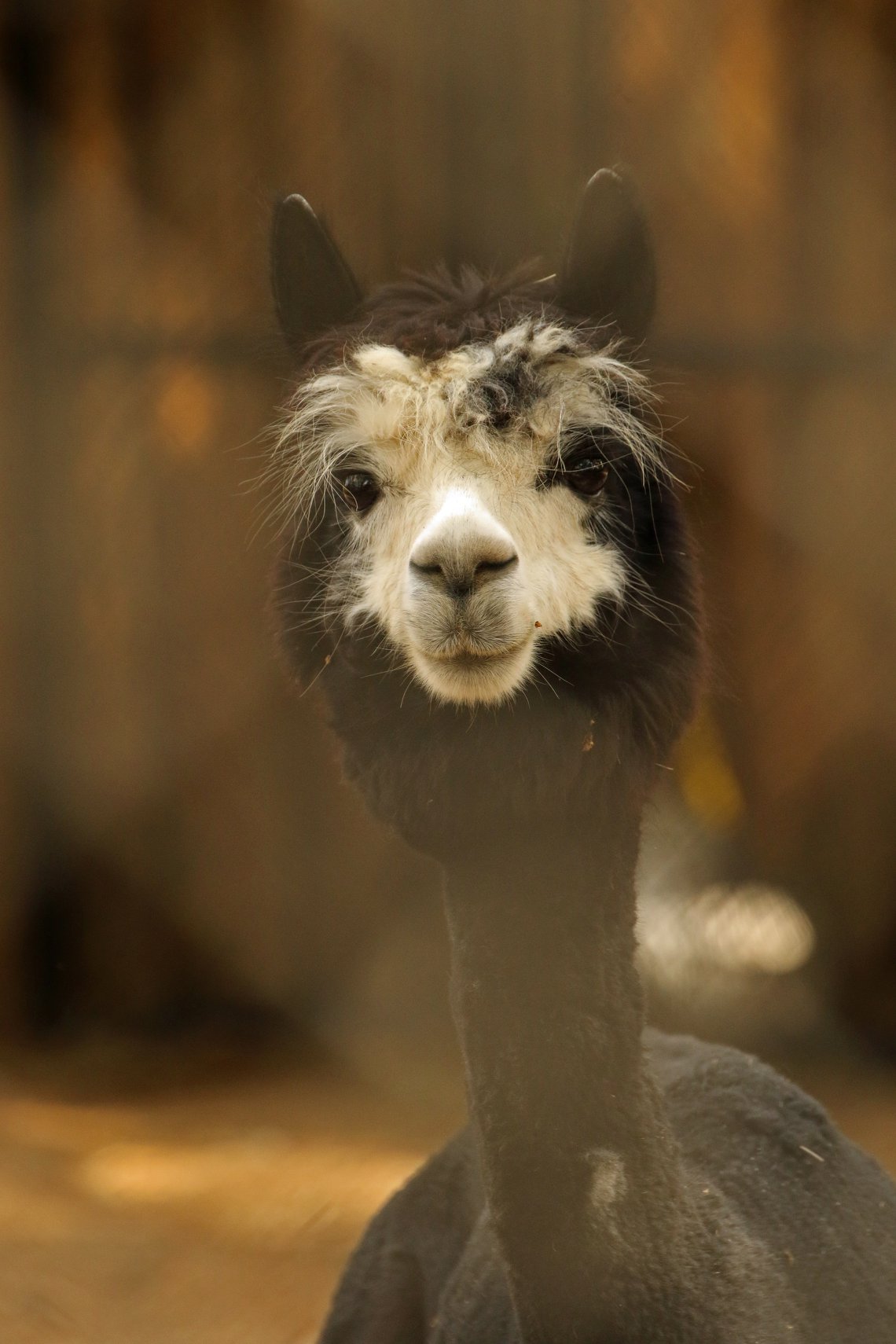Alpacas



Alpacas are the smallest species of domesticated camelids (camel family). They look almost just like a llama, except smaller. They have small heads, with large eyes and large pointed ears. Their necks, bodies and legs are slender. They have two sharp, pointed nails on the end of each padded foot. They can come in many different colors and be either one solid color, or multicolor. Males and females look basically the same, except that the males can have larger bottom teeth used in fighting. There are two different breeds of alpaca. The huacaya (which are the most common) have long crimpy hair that covers their neck, legs and body. The suri have much silkier hair that grows faster.
Habitat/Range:
Alpacas are native to the Andes Mountains of South America. They live at high elevations up on the grassland plateaus. Since they are a domesticated species however, they can be found all over the world on farms.
Size:
Alpacas are the smallest of the domesticated camelid species. Adult alpacas usually range from 100 to 200 pounds (45 to 90 kilograms). Their head and body length ranges from 47 to 85 inches (1.2 to 2.2 meters).Their shoulder height is typically 32 to 40 inches (0.8 to 1.1 meters).
- A baby alpaca is known as a “cria.”
- Alpacas have a low impact on their environment due to their soft, padded feet, which leave delicate grasses and terrain undamaged as they graze.
- Alpacas are farmed mainly for their “fiber” or fleece, which is warmer and stronger than wool. They are also farmed for their healthy meat, skin and dung.
- Adult male alpacas develop fighting teeth or fangs that can be more than 1.2 inches (3 centimeters) long.
- Researchers believe that alpacas were developed through selective breeding that was heavily influenced by the vicuna more than 6,000 years ago. Alpacas and wild vicunas are similar in size, fiber and dentition (teeth).
After the arrival of Spanish conquistadors in South America, alpacas were displaced by sheep and goats in the lowlands, leading to their concentration in high elevations. The major threat to this species is hybridization with llamas. The conservation status of alpacas has not been evaluated by the International Union for Conservation of Nature (IUCN). As a domesticated species, they can now be found on farms all over the world.
Photos by Karen Caster



